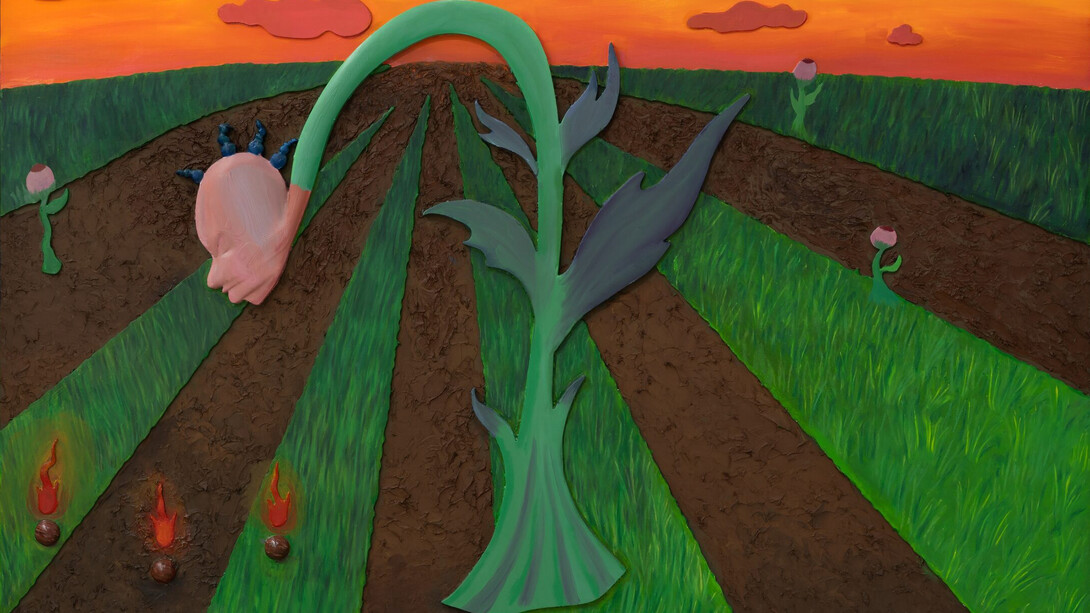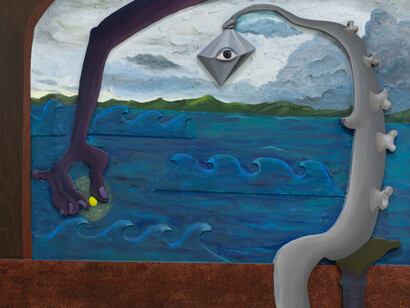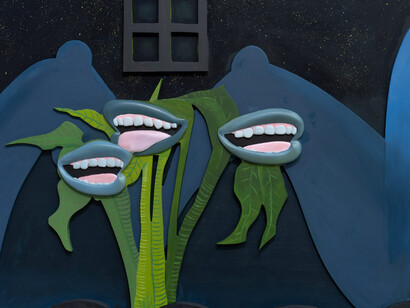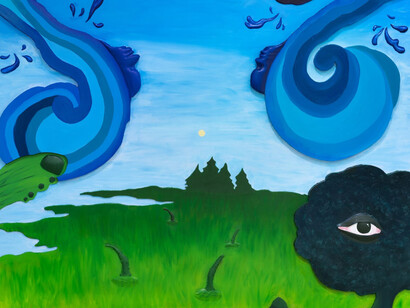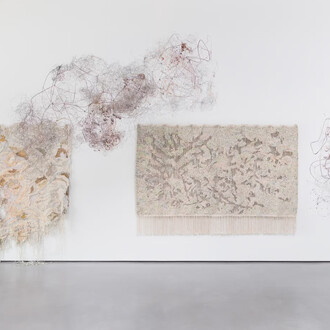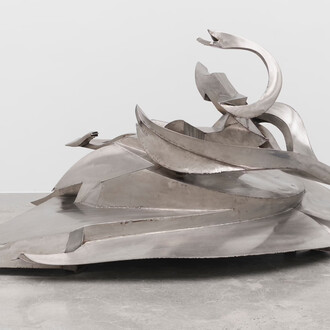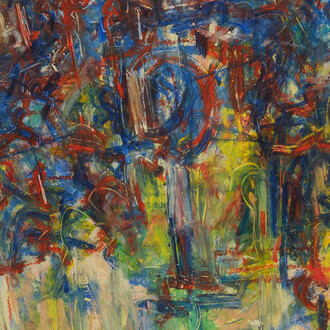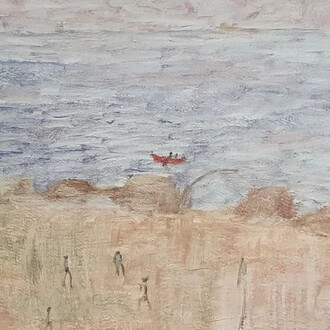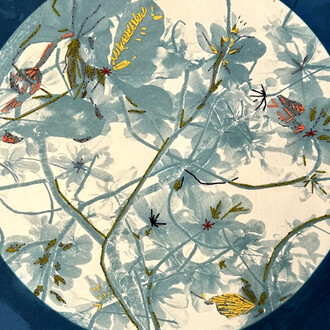The centennial of Surrealism underscores its lasting influence on contemporary art. André Breton’s Surrealist manifesto (1924) championed dreams over reason and the subconscious over realism as a path to freedom. Curated by Erin Dziedzic, this exhibition marks the debut of new work at David Castillo by New York–based artist Alexandria Smith, who carries this legacy forward, blending dream logic with symbolism, metaphor, and entwined forms of body and landscape. She remixes inherited iconography and collages elements intuitively, highlighting hybridity and duality. Through myth, biography, collective memory, and history, Smith challenges binaries and reveals the layered complexities of human experience.
Smith often engages literary references in which the body, the land, and notions of freedom are mythologized as survival and critique. The exhibition’s title, drawn from Toni Morrison’s Beloved—“in this here place, we flesh”—comes from Sethe’s recollection of Baby Suggs’s sermon in a wooded clearing. Surrounded by nature and community, Baby Suggs affirmed the radical act of self-love. In Morrison’s passage, the fusion of house, landscape, and people generates a surreal atmosphere—one that resonates in Smith’s own intertwining of bodies and landscapes, where memory becomes both image and sensation.
Drawing is central to Smith’s practice. Her paintings begin with ink drawings in which line and idea emerge with immediacy. While dimensional surfaces, cuts, and textures develop later in the paintings, the drawings reveal the clarity of her compositions—figures formed from earth, fire, water, flowers, and clouds. These hybrid entities, at once recognizable and otherworldly, recall the transformative interplay of human, animal, and elemental forms in the work of early Surrealist Leonora Carrington.
As drawings transition into panel paintings, Smith builds out select portions with textural surfaces, and dimensional mark-making that emphasize figures, body parts, and layers of landscape. In a curious intervention (2025), a raised tentacle—also resembling a seated, figure-like form with a breast and dangling diamond—features a single eye that gazes intently back at the viewer. The paintings become sculptural: breasts recur in varied forms, acknowledging the breaths of female identity, while the raised eye persists as a motif—an echo of Surrealist iconography akin to Louise Bourgeois’s marble eyes, both symbols of perception and allusions to female sexual anatomy. A bent, disembodied purple arm reaches downward opposite the tentacle, framing water, mountains, and sky as it holds a tiny glowing orb. These three-dimensional components lend the works a theatrical quality reminiscent of scenic design. Arched elements recall Renaissance niches, while horizon lines nod to early American landscape painting. Within this staged modernist display, Smith reimagines gender, identity, and iconography as organic, corporeal tableaux.
Her sculptural relief paintings further question the notion of “absolute beauty” advanced by Western philosophy, art, and architecture—from Freud to Le Corbusier—as a formula of “cleanliness”. Smith’s method of raised collage was inspired by a 2021 visit to the Peggy Guggenheim Collection in Venice, where she encountered tactile reproductions designed for blind visitors. This translation of the unseen into form informs her surfaces. In works such as a velocity of being (2025)—a floating purple figure whose head blossoms into a silhouette of cornrows—Smith invokes representations of Josephine Baker. Baker’s exaggerated, sculptural poses “and all that she stands for—objectification and desire— complicate a larger and more fraught transnational history in the making of material value based on human bodies.” In the painting’s gestural outline, the suggestion of Baker appears in the curved figure and in the evocation of Black female identity. The hint of a triangle in the upper right corner, alluding to turning the page, signals Smith’s turn toward a new chapter in the idealization of Black female agency—materialized through the surreal, modernist, and colonialist histories from which it has evolved.
Much of what brings Surrealist dialogue into Smith’s practice foregrounds states of in betweenness. Her gestures, forms, and spaces draw from imagery and knowledge of the past, while her modeling of complex contemporary surfaces shifts these gestures into modes of present and future expression—a Surrealism reimagined for our own epoch.
